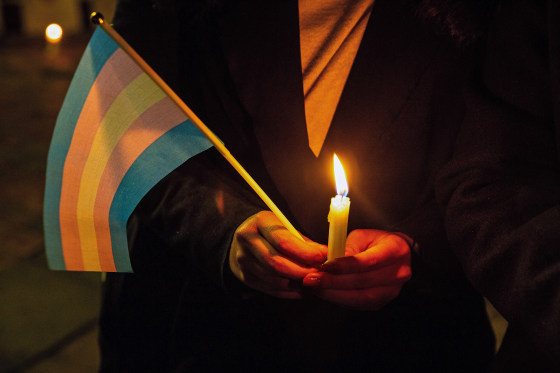
Transgender people who have died as a result of violence are the subject of Wednesday’s Transgender Day of Remembrance. Here’s what you need to know.
What is Transgender Day of Remembrance?
Established in 1999 to commemorate the death of transgender woman Rita Hester in Massachusetts, the Transgender Day of Remembrance is observed on November 20 every year.
In an effort to increase public awareness of the transgender population and the challenges they confront, Transgender Awareness Week comes to a conclusion on this day.
According to the UCLA Law Williams Institute, 1.6 million Americans aged 13 and older identify as transgender. Additionally, it claims that transgender persons are more than four times as likely as cisgender people to experience violence, such as assault and rape.
To commemorate the day, memorial services, candlelight vigils, and other activities are organized. Alongside the day, the Human Rights Campaign also published its annual report on transgender mortality.
March is the International Transgender Day of Visibility, a celebration aimed at raising awareness of transgender individuals.
How many transgender people have lost their lives to violence?
According to the Human Rights Campaign’s annual report, in the 12 months since the last Day of Remembrance, at least 36 transgender persons have lost their lives to violence. According to the organization, 372 transgender and gender-expansive victims—those with a more flexible range of gender identity or expression than is generally associated with the binary gender system—have died as a result of abuse since 2013.
Because many deaths go unreported or are misreported, or because victims’ genders cause delays in their identification, the number of victims is probably higher.
Compared to the previous year, when it identified at least 33 transgender victims of violence, the Human Rights Campaign reported a modest increase.
Black transgender women made almost half of the 36 victims documented, and many of the victims monitored over the past year were young or people of color. The youngest victim ever identified was Pauly Likens, a 14-year-old Pennsylvanian.
According to the group, firearms were involved in two-thirds of the deaths. An intimate lover, acquaintance, or family member killed nearly one-third of the victims with a known killer.
What is at stake politically?
The observance this year comes after an election in which proponents claim that the election of President-elect Donald Trump and other Republican candidates who prioritized issues such as transgender athletes was a blow to the rights of trans people.
It also comes after a number of laws that have been passed this year in Republican states that limit the rights of transgender individuals, particularly young people.
Gender-affirming medical care for transgender youth is prohibited in half of the states. Next month, the U.S. Supreme Court will hear arguments in a lawsuit contesting Tennessee’s ban.
Advocates are concerned that the rhetoric and laws may lead to more violence against transgender people and that it is reducing the number of safe spaces for transgender persons.
Note: Thank you for visiting our website! We strive to keep you informed with the latest updates based on expected timelines, although please note that we are not affiliated with any official bodies. Our team is committed to ensuring accuracy and transparency in our reporting, verifying all information before publication. We aim to bring you reliable news, and if you have any questions or concerns about our content, feel free to reach out to us via email. We appreciate your trust and support!
